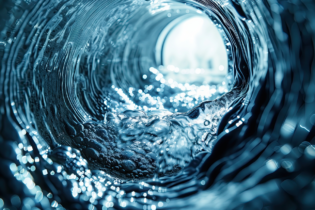The World Bank Board of Executive Directors approved an International Development Association (IDA*) credit of US$135 million that will provide about 245 792 Ugandans with access to potable water, and another 26 000 to improved sanitation facilities including latrines and sewerage facilities.
The Uganda Water Management and Development Project (WMDP) will also connect 14 739 new households to piped water; and rehabilitate networks serving an additional 22 249 household connections. The project’s broader objective is to improve integrated water resources planning, management, and development. In addition, it aims to protect water resources, conserve the environment, and improve productivity through better management of water for livestock, irrigation, and energy. “This operation supports Government’s efforts to plan and coordinate water resources management and development, with a view to improving productivity and service delivery, and reducing vulnerability to water shocks,” said Rosemary Mukami- Kariuki, Task Team Leader for the Operation. Apart from the conventional approach to water management, the project will also introduce modern technology such as mobile sets and short message service connectivity to observers for near-real time data transfer from Government’s rain gauge network, 69 surface water sites and 30 groundwater sites, which information will help to guard against unpredictable weather patterns. The greater part of project funding will be invested in constructing, improving and expanding priority water supply infrastructure and sanitation/sewerage services in the municipalities of Arua, Gulu, Ishaka-Bushenyi, and Mbale; and in various towns spread across the country: Butaleja-Busolwe, Budaka-Kadama-Tirinyi, Kumi-Nyero-Ngora, Rukungiri, Busia, Pallisa, Katwe-Kabatoro and Koboko. These investments will be made by both the National Water and Sewerage Corporation and the Directorate of Water Development in the Ministry of Water and Environment, who will coordinate their efforts with other entities engaged in water resources management and environment.The WMDP, which was prepared in consultation with other donors supporting the Water and Environment Sector, through the Joint Water and Environment Sector Working Group, is aligned with the Government’s National Development Plan, whose focus is on asset formation and increasing productivity and competitiveness to promote faster economic growth.
“With this new credit we hope to improve the utilisation and productivity of Uganda’s water resources which will have a catalytic impact– improving the sustainability of investments in the energy, agriculture, environment, as well as water supply and sanitation sectors, among others”, said Moustapha Ndiaye, World Bank Uganda Country Manager. The Water Management and Development Project is the World Bank’s first specific investment loan in the country’s water sector in the last 10 years (since the Small Towns Water Project – 2001). The Small Towns Water Supply and Sanitation improvement programme supported the development of water supply infrastructure and sanitation/sewerage services in selected towns and has since been scaled up significantly, now reaching 70 towns.* The World Bank’s International Development Association (IDA), established in 1960, helps the world’s poorest countries by providing loans (called credits) and grants for projects and programmes that boost economic growth, reduce poverty, and improve poor people’s lives. IDA is one of the largest sources of assistance for the world’s 81 poorest countries, 39 of which are in Africa. Source: worldbank.org






